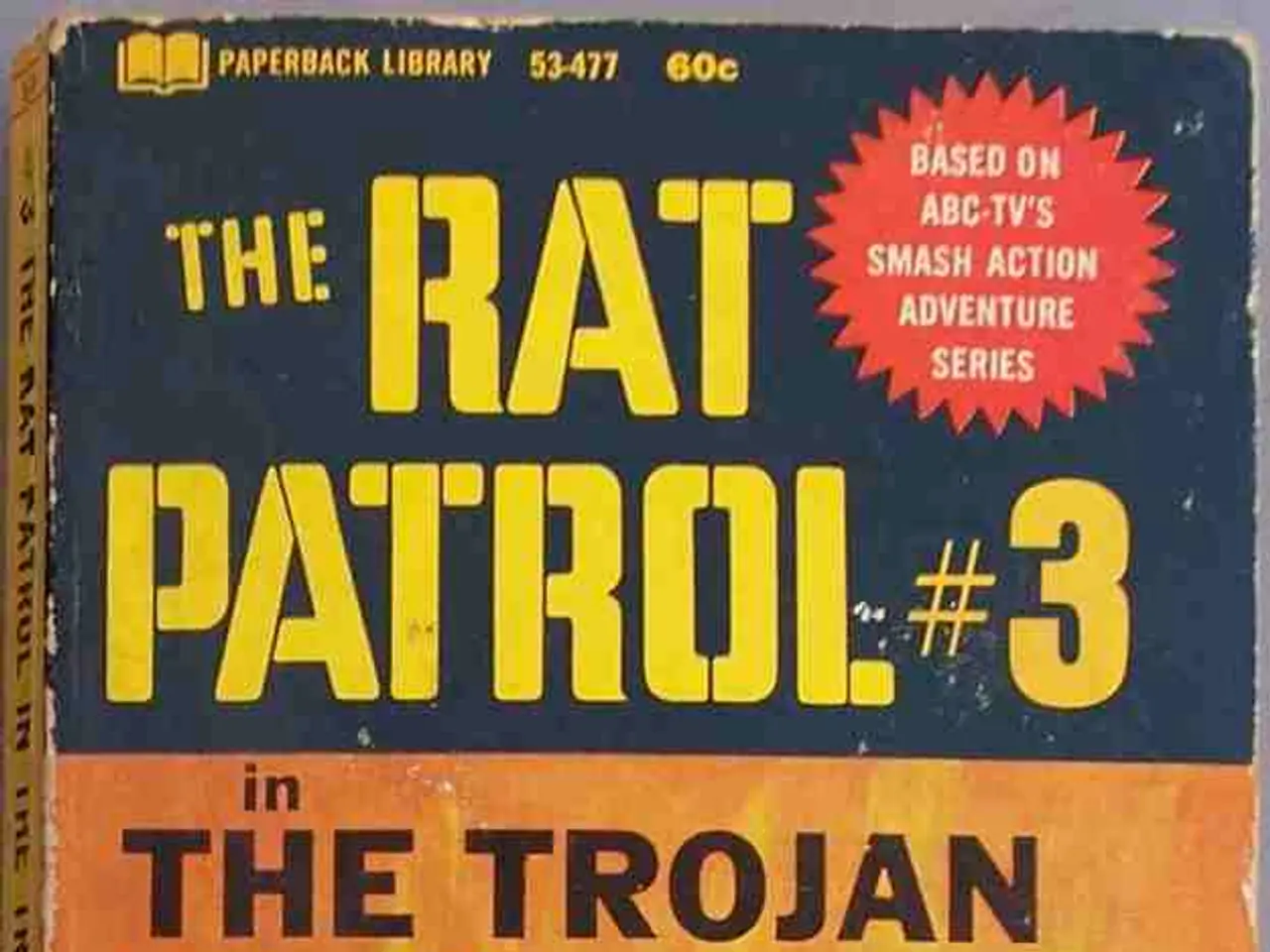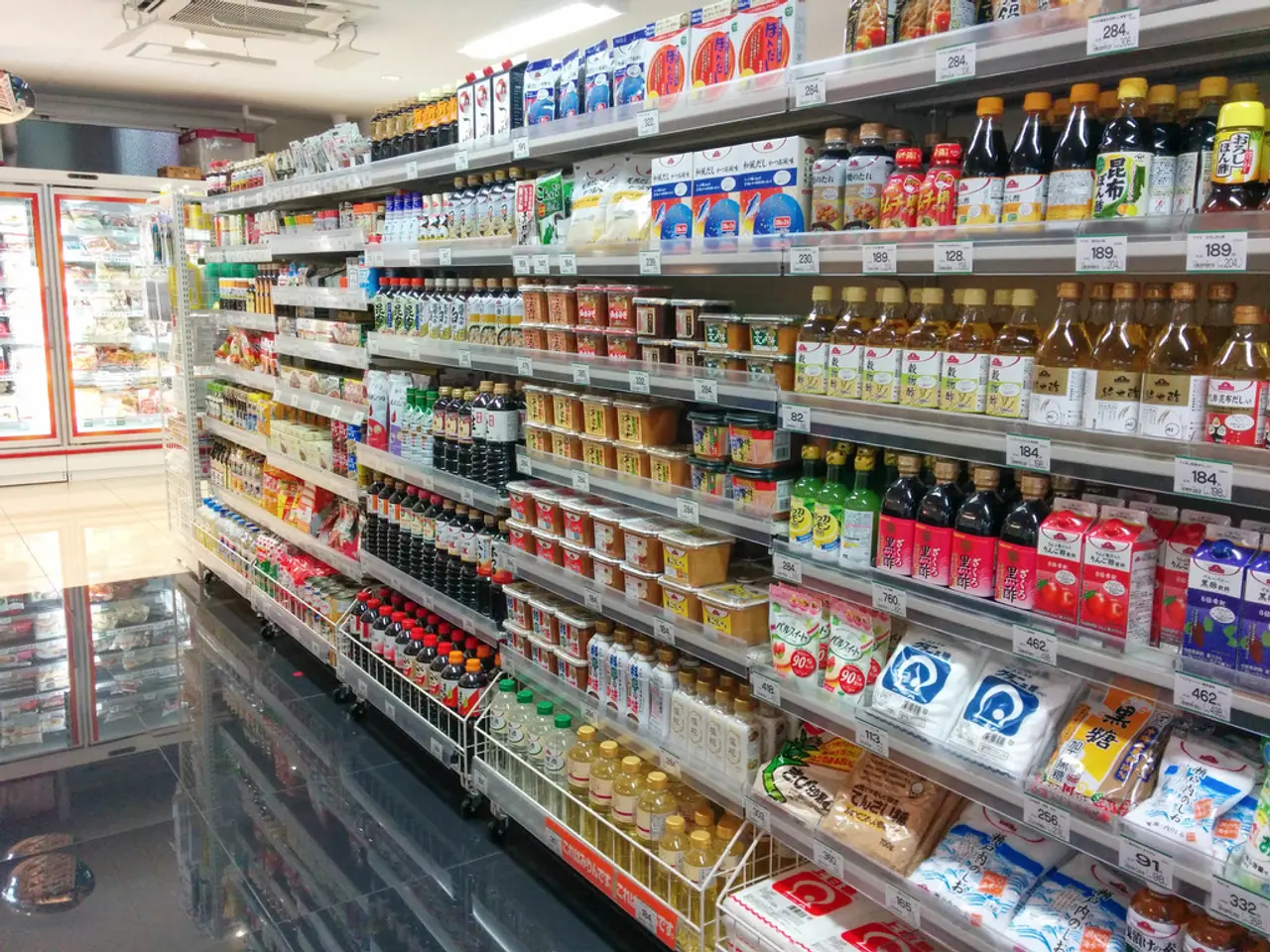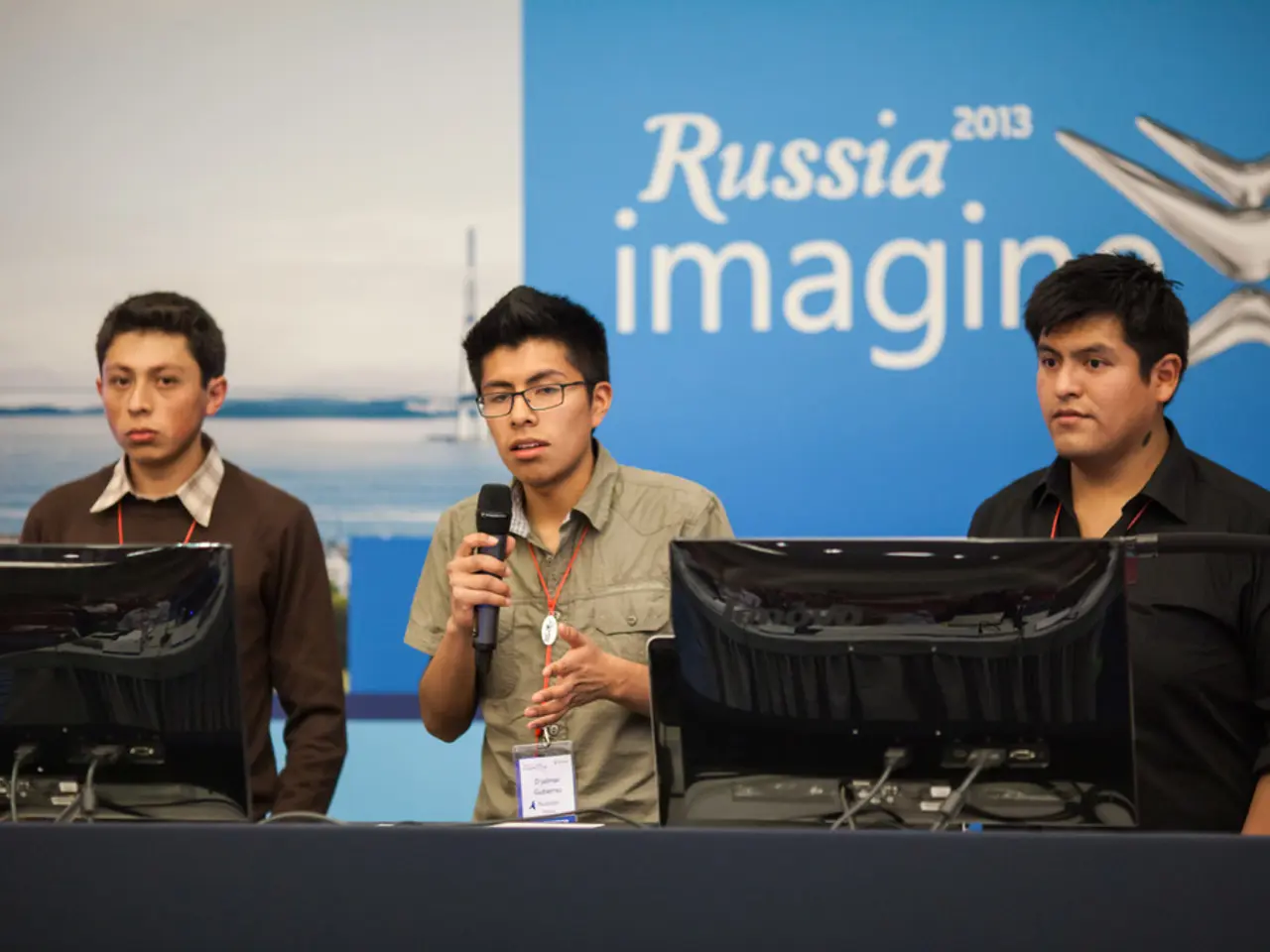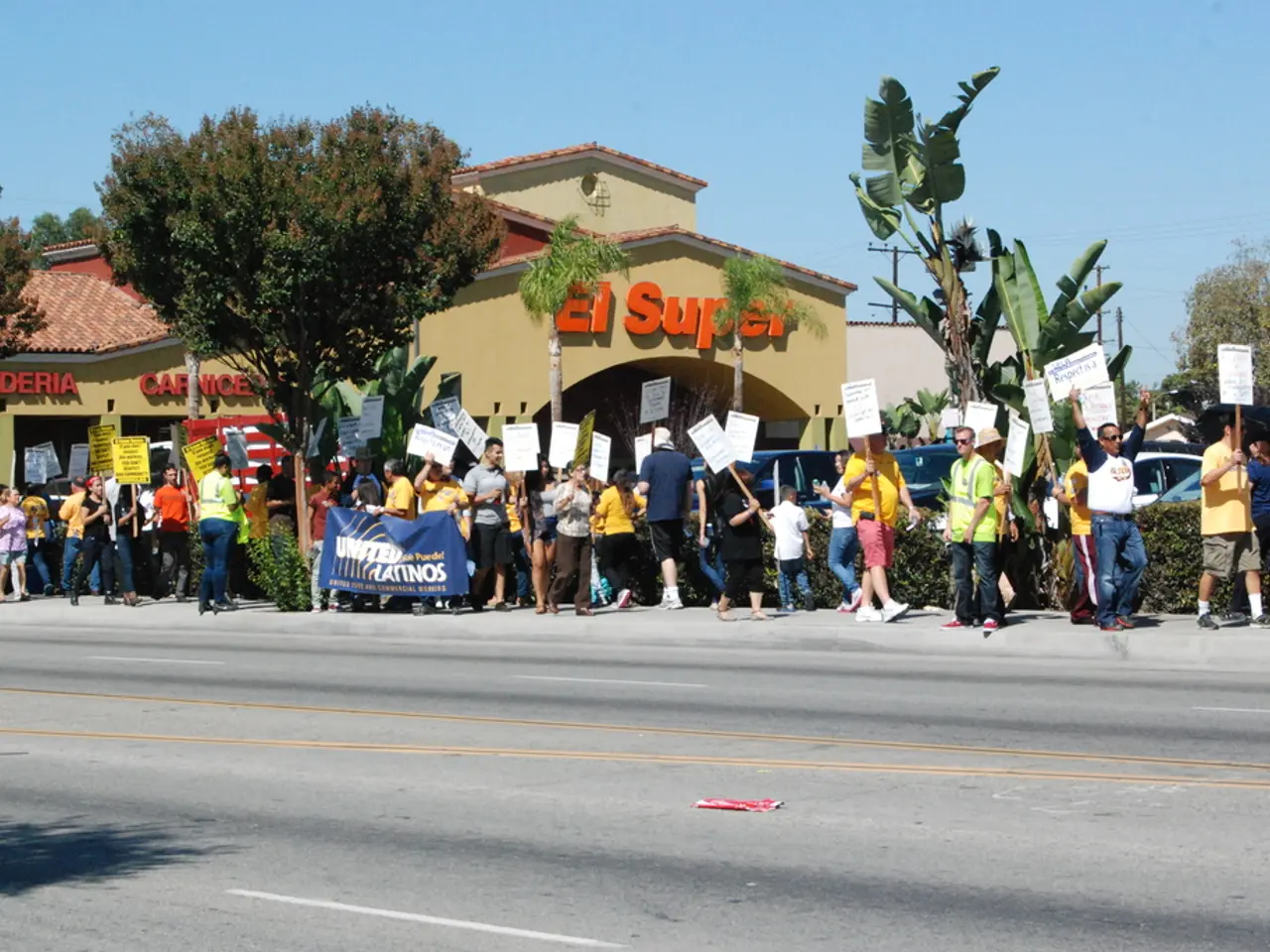Russian leader Putin showcases novel battle tanks and rocket systems
In a notable departure from tradition, Russia's military parade in Yekaterinburg this year showcased a new strategic focus on combat readiness and anti-drone capabilities.
The absence of prestige prototypes and ceremonial grandeur was conspicuous, replaced instead by practical military equipment and potential threats. This shift towards realistically deployable hardware suggests a new narrative for Russia's military displays.
The parade featured six combat tanks equipped for anti-drone warfare, complete with cage structures, nets, and rubber rollers. This emphasis on countering drone threats underscores Russia's recognition of drones as a significant modern battlefield threat, aligning with broader military trends emphasizing counter-drone technologies.
The display of classic BM-21 "Grad" and BM-30 "Smerch" rocket launchers, which have been central to the conflict in Ukraine since its inception, indicates a continued reliance on these weapons in Russia's military arsenal. However, the prominent inclusion of anti-drone equipped combat tanks and armored personnel carriers with jammers signals a shift in Russia's military strategy towards technological advancements.
Notably, the parade did not showcase so-called "superweapons" such as Armata tanks, Terminator infantry fighting vehicles, or massive nuclear missiles. This omission, coupled with the focus on combat-ready equipment and forces, may be a strategic move to demonstrate resilience and adaptation after recent military challenges.
The leadership's decision to forego World War II tanks as symbols of the historic victory over Nazi Germany further underscores this shift towards practicality and readiness. Instead, the parade displayed a modern combat formation, potentially deployable to the front lines in Donetsk or the NATO border.
The dress rehearsal for the parade took place one month prior in Yekaterinburg, and the grand military parade marking "Victory Day" was scheduled for May 9. The change in the image of the military parade this year, focusing more on combat readiness and less on spectacle, conveys a message that Russia is prepared for a long, real war, not just in Ukraine, but also as a deterrent against NATO.
This strategic shift reflects Russia's acknowledgment of evolving warfare dynamics and a move toward practical militarization — blending traditional displays of power with demonstrable battlefield utility. The parade's focus on anti-drone tanks can be seen as part of Russia’s strategic messaging to both domestic and international audiences, signaling a readiness to defend against contemporary threats and a recalibration of military priorities in its strategic doctrine.
Sources:
- Russia's Military Parade in Yekaterinburg Focuses on Combat Readiness and Anti-Drone Tanks
- Russia's Shift in Military Parade Strategy: A Focus on Combat Readiness and Anti-Drone Capabilities
- Russia's Military Parade in Yekaterinburg: A New Emphasis on Practicality and Readiness
- Russia's Military Parade in Yekaterinburg: An Analysis of the Shift Towards Combat Readiness and Anti-Drone Tanks
- Russia's Military Modernization and the Heightened Significance of Drone Defense Capabilities
- The focus on combat readiness and anti-drone technologies in Russia's military parade this year demonstrates a shift in its military strategy, aligning with broader news trends about war-and-conflicts and general-news.
- The decision to emphasize practical military equipment and potential threats, rather than prestige prototypes, in the parade suggests a new narrative for Russia's politics and military displays, aligning with the theme of realistically deployable hardware and modern battlefield threats.







